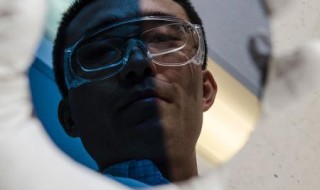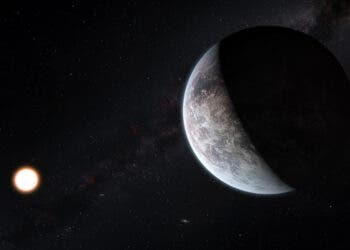A team at Caltech has devised a new film coating that facilitates catalysis and electron transfer in a solar powered system that splits water into hydrogen and oxygen, which can be used as fuels. Such a system is also called an artificial leaf or solar-fuel generator because in many ways it mimics the process which plants use to convert sunlight and CO2 into oxygen and fuel (sugars, carbohydrates). The researchers make note, however, that they’re still a long way from making it commercial viable, but these sort of updates are inspiring.
Inspired by nature, nurtured by technology

The artificial leaf developed at the Caltech Joint Center for Artificial Photosynthesis (JCAP) consists of three main components: two electrodes — a photoanode and a photocathode — and a membrane. At the photoanode side, water molecules are split into oxygen gas (O2), electrons and hydrogen protons through oxidation in the presence of sunlight and the thin film coating the team recently developed. The coating is a nickel oxide film that prevents rusts building-up on the semiconductor electrodes (silicon or gallium arsenide), while also acting as a highly reactive catalysis. The electrons travel through a circuit to the photocathode where they combine with the hydrogen protons to make hydrogen gas (H2). Like in a fuel cell, the membrane is not only essential to collecting the hydrogen, but also to keep the highly reactive oxygen and hydrogen from recombining. In some cases, this reaction can also lead to explosions. Essentially, the Caltech membrane for their artificial leaf only allows hydrogen protons to pass through, like an ion sieve, while hydrogen and oxygen gases are safely and separately expelled to use as fuels or oxidants.

Of course, the system is nothing new – the coating represents the real breakthrough. The photoelectrodes, left by themselves, are very vulnerable to oxidation (rust) and in a short while this ruins the solar-fuel generator’s operation. Scientists had to find a film that is easy to apply, highly catalytic, doesn’t oxidize and cheap to make. It took a lot of hard work, but eventually the team led by Nate Lewis, the George L. Argyros Professor and professor of chemistry at Caltech, hit the jackpot.
“After watching the photoanodes run at record performance without any noticeable degradation for 24 hours, then 100 hours and then 500 hours, I knew we had done what scientists had failed to do before,” says Ke Sun for ZME Science, a postdoc in Lewis’s lab and the first author of the new study.
The film also had to work well with the membrane to make it safe. To make the nickel oxide coating, the researchers used a technique which involves smashing atoms of argon into a pellet of nickel atoms at high speed.
“Without a membrane, the photoanode and photocathode are close enough to each other to conduct electricity, and if you also have bubbles of highly reactive hydrogen and oxygen gases being produced in the same place at the same time, that is a recipe for disaster,” Lewis says regarding his findings published in PNAS. “With our film, you can build a safe device that will not explode, and that lasts and is efficient, all at once.”
Next, Lewis and colleagues need to perfect the photocathode. Their system isn’t viable (too little hydrogen is made), but at least one key piece of the jigsaw puzzle that has eluded scientists for the past 50 years has been solved.






